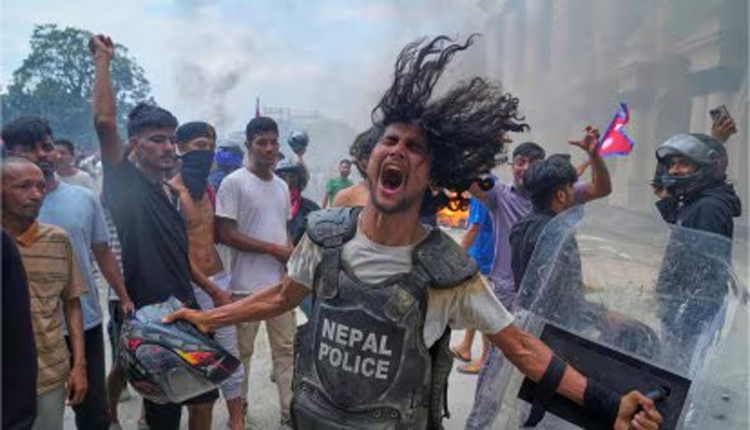New Delhi: In a dramatic political shift in Nepal, the newly-appointed Prime Minister Sushila Karki is facing fierce backlash from Generation-Z, just three days after assuming office.
The group has accused Karki of abandoning the core promises of her appointment and sidelining youth voices in the interim cabinet formation.
Gen-Z protests outside Prime Minister’s residence
Led by the NGO Ham Nepali under Sudan Gurung, hundreds of Generation-Z activists gathered outside the official residence of Prime Minister Karki on Monday, chanting slogans of “Sushila Karki Murdaabad” (“Down with Sushila Karki”).
Among the protesters were families of children reportedly killed in police firing incidents — people who say their demands and involvement have already been ignored.
They claim Karki’s stance has shifted dramatically since taking office. Specifically, they allege that many important decisions are being taken unilaterally, and that the interim cabinet does not reflect the participation of those who fought for change.
Interim Cabinet appointments spark outrage
On September 15, Prime Minister Karki announced three interim ministers: Kulman Ghising to head the Ministry of Energy and Physical Infrastructure; Om Prakash Aryal to Home and Law; and Rameshwar Khanal for Finance.
Gen-Z leaders have criticised the appointments, particularly Aryal’s inclusion. They say he was not part of the protest leadership, and that through political manoeuvrings, people from outside the youth movement are being given power — thus betraying the very essence of the movement.
How Nepal reached this turning point
The turmoil began when former Prime Minister KP Sharma Oli resigned, following sustained pressure. President Ramchandra Paudel then dissolved Parliament and, responding to calls by Generation-Z representatives, appointed Sushila Karki — former Chief Justice — to serve as interim Prime Minister. Karki’s task is to oversee free and fair elections within six months, at which point a new government will be chosen through a general parliamentary vote.
Nepal’s House of Representatives consists of 275 seats, and a party or coalition requires at least 138 seats to form the government. Until elections are held, this interim government’s legitimacy hinges heavily on maintaining credibility with youth activists and protesters alike.
What lies ahead
With tensions rising, the Gen-Z movement is demanding greater inclusion and accountability from the interim leadership. The question remains whether Prime Minister Karki can balance her responsibilities with the expectations of those who believed they had helped bring her to power. If she fails to do so, the protests may intensify ahead of the approaching general elections.



Comments are closed.